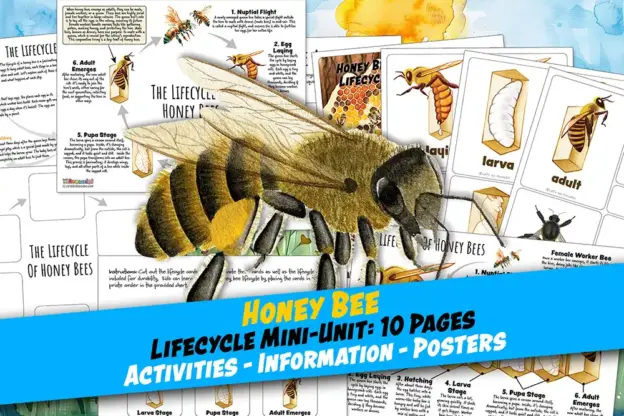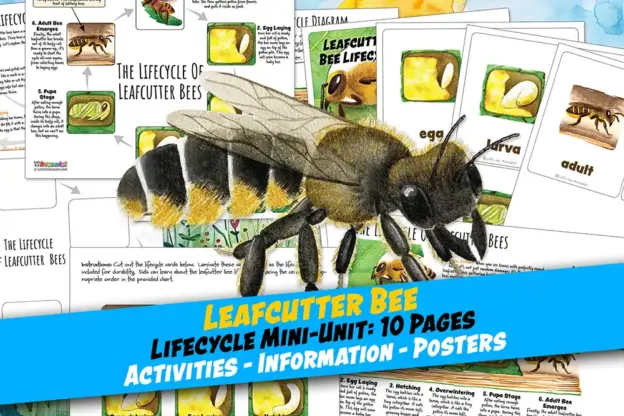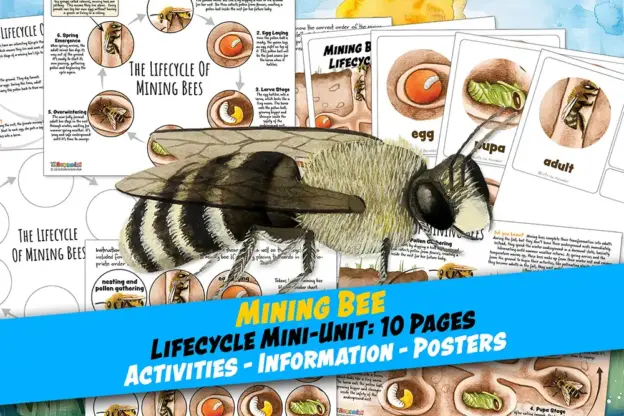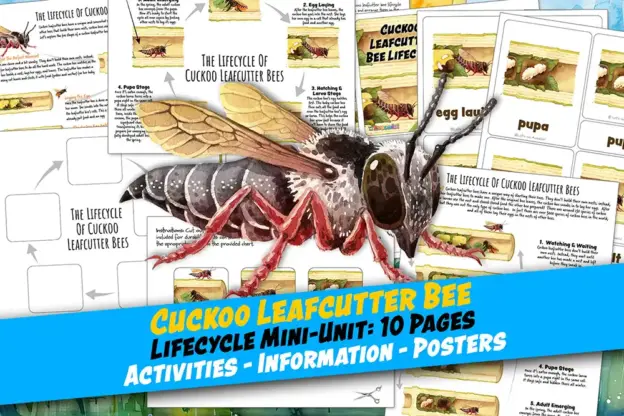-
 Latin Name:Apis melliferaLocations Found:North America, Europe, Asia, Africa, Australia, New ZealandCharacteristics:Honey bees have several distinctive features that make them unique. They have a golden-yellow body with dark brown bands and are covered in tiny hairs, which help them collect pollen. Their wings are transparent, and they have large compound eyes on the sides of their heads, allowing them to see in multiple directions. Honey bees have a unique structure on their hind legs called a pollen basket, or corbicula, where they store collected pollen while flying back to the hive. This adaptation helps them efficiently carry large amounts of pollen, which is crucial for their role as pollinators. Another fascinating feature is their stinger, which they use for defense. Worker bees have barbed stingers, meaning they can only sting once and then die. Honey bees also communicate using a special dance known as the waggle dance, which tells other bees where to find food.$ USD327Was: $4.36
Latin Name:Apis melliferaLocations Found:North America, Europe, Asia, Africa, Australia, New ZealandCharacteristics:Honey bees have several distinctive features that make them unique. They have a golden-yellow body with dark brown bands and are covered in tiny hairs, which help them collect pollen. Their wings are transparent, and they have large compound eyes on the sides of their heads, allowing them to see in multiple directions. Honey bees have a unique structure on their hind legs called a pollen basket, or corbicula, where they store collected pollen while flying back to the hive. This adaptation helps them efficiently carry large amounts of pollen, which is crucial for their role as pollinators. Another fascinating feature is their stinger, which they use for defense. Worker bees have barbed stingers, meaning they can only sting once and then die. Honey bees also communicate using a special dance known as the waggle dance, which tells other bees where to find food.$ USD327Was: $4.36 -
 Latin Name:Megachile rotundataLocations Found:North America, Europe, Australia, New Zealand, Central AsiaCharacteristics:Alfalfa leafcutter bees are small to medium-sized bees with a distinct metallic sheen. They have robust bodies, with the females typically larger than the males. These bees have large mandibles, which they use to cut circular pieces from leaves and petals. One of their unique adaptations is the way they carry pollen. Unlike most bees, which carry pollen in baskets on their hind legs, alfalfa leafcutter bees carry pollen on the underside of their abdomen, where it sticks to a dense layer of hairs called a scopa. This adaptation allows them to carry more pollen and makes them highly effective pollinators. Their wings are transparent, and they have two large compound eyes that give them excellent vision. These features, along with their solitary nesting habits, make them easy to recognize.$ USD327Was: $4.36
Latin Name:Megachile rotundataLocations Found:North America, Europe, Australia, New Zealand, Central AsiaCharacteristics:Alfalfa leafcutter bees are small to medium-sized bees with a distinct metallic sheen. They have robust bodies, with the females typically larger than the males. These bees have large mandibles, which they use to cut circular pieces from leaves and petals. One of their unique adaptations is the way they carry pollen. Unlike most bees, which carry pollen in baskets on their hind legs, alfalfa leafcutter bees carry pollen on the underside of their abdomen, where it sticks to a dense layer of hairs called a scopa. This adaptation allows them to carry more pollen and makes them highly effective pollinators. Their wings are transparent, and they have two large compound eyes that give them excellent vision. These features, along with their solitary nesting habits, make them easy to recognize.$ USD327Was: $4.36 -
 Latin Name:Andrena cinerariaLocations Found:Europe, Central Asia, North AfricaCharacteristics:Ashy mining bees have a distinctive appearance with a black body covered in ashy-gray hairs, which gives them their name. The females are larger than the males and have a thick band of white or gray hair across the top of their thorax. These bees have strong mandibles, which they use for digging their nests in the ground. The females also have pollen baskets on their hind legs, which are covered in dense hairs for carrying pollen back to their nests. Their wings are clear with dark veins, and they have large, dark eyes that help them navigate their surroundings. The ashy mining bee's appearance is unique among bees, and its ashy coloration helps it blend in with its surroundings, providing camouflage against predators. This bee also has a slender and elongated body, which makes it well-suited for its burrowing lifestyle.$ USD327Was: $4.36
Latin Name:Andrena cinerariaLocations Found:Europe, Central Asia, North AfricaCharacteristics:Ashy mining bees have a distinctive appearance with a black body covered in ashy-gray hairs, which gives them their name. The females are larger than the males and have a thick band of white or gray hair across the top of their thorax. These bees have strong mandibles, which they use for digging their nests in the ground. The females also have pollen baskets on their hind legs, which are covered in dense hairs for carrying pollen back to their nests. Their wings are clear with dark veins, and they have large, dark eyes that help them navigate their surroundings. The ashy mining bee's appearance is unique among bees, and its ashy coloration helps it blend in with its surroundings, providing camouflage against predators. This bee also has a slender and elongated body, which makes it well-suited for its burrowing lifestyle.$ USD327Was: $4.36 -
 Latin Name:Coelioxys texanaLocations Found:Texas, North America, Southern United States, MexicoCharacteristics:The Texas cuckoo leafcutter bee has a shiny, metallic body, usually black or dark green. It has long, slender mandibles, which it uses to pierce the walls of other bees' nests to lay its eggs. These bees have large, round eyes that give them excellent vision. They also have a sharp, pointed abdomen, which they use to puncture the cells of the host bee's nest. The females have a unique adaptation called an ovipositor, which is a specialized structure for laying eggs. This adaptation allows them to insert their eggs into the host bee's cells without damaging the provisions inside. The Texas cuckoo leafcutter bee is often smaller than its host, and it does not have the dense hairs used for pollen collection that are typical of other bees. This bee's appearance and behavior make it easy to identify among other bees.$ USD327Was: $4.36
Latin Name:Coelioxys texanaLocations Found:Texas, North America, Southern United States, MexicoCharacteristics:The Texas cuckoo leafcutter bee has a shiny, metallic body, usually black or dark green. It has long, slender mandibles, which it uses to pierce the walls of other bees' nests to lay its eggs. These bees have large, round eyes that give them excellent vision. They also have a sharp, pointed abdomen, which they use to puncture the cells of the host bee's nest. The females have a unique adaptation called an ovipositor, which is a specialized structure for laying eggs. This adaptation allows them to insert their eggs into the host bee's cells without damaging the provisions inside. The Texas cuckoo leafcutter bee is often smaller than its host, and it does not have the dense hairs used for pollen collection that are typical of other bees. This bee's appearance and behavior make it easy to identify among other bees.$ USD327Was: $4.36 -
 Latin Name:Osmia lignariaLocations Found:United States, CanadaCharacteristics:The blue orchard mason bee is notable for its robust body and metallic blue to greenish-blue sheen. Adult bees range in size from about 8 to 14 mm, making them slightly smaller than a common honeybee. Their bodies are adapted for cold-weather foraging, with dense hairs that help retain heat, enabling them to fly in lower temperatures. This adaptation is crucial for their role in pollinating early spring blossoms. Unlike many bees, they do not have baskets to carry pollen; instead, they gather pollen on their abdomen's underside, allowing them to efficiently transfer pollen between flowers as they buzz around. This method not only aids in more effective pollination but also highlights their importance in agricultural areas, particularly orchards.
Latin Name:Osmia lignariaLocations Found:United States, CanadaCharacteristics:The blue orchard mason bee is notable for its robust body and metallic blue to greenish-blue sheen. Adult bees range in size from about 8 to 14 mm, making them slightly smaller than a common honeybee. Their bodies are adapted for cold-weather foraging, with dense hairs that help retain heat, enabling them to fly in lower temperatures. This adaptation is crucial for their role in pollinating early spring blossoms. Unlike many bees, they do not have baskets to carry pollen; instead, they gather pollen on their abdomen's underside, allowing them to efficiently transfer pollen between flowers as they buzz around. This method not only aids in more effective pollination but also highlights their importance in agricultural areas, particularly orchards. -
 Latin Name:Bombus spp.Locations Found:Found across North America, Europe, Asia, and South AmericaCharacteristics:Bumblebees are easy to spot with their large, hairy bodies that are black with yellow (and sometimes orange) stripes. This hair, called setae, helps them collect pollen. Bumblebees are bigger and rounder than other bees and can fly in cooler temperatures thanks to their ability to shiver to warm up. This adaptation allows them to be active earlier in the spring and later into the fall than other bees. They have strong mandibles (jaws) that allow them to bite and manipulate materials for nest building, which is essential for their survival in diverse climates.
Latin Name:Bombus spp.Locations Found:Found across North America, Europe, Asia, and South AmericaCharacteristics:Bumblebees are easy to spot with their large, hairy bodies that are black with yellow (and sometimes orange) stripes. This hair, called setae, helps them collect pollen. Bumblebees are bigger and rounder than other bees and can fly in cooler temperatures thanks to their ability to shiver to warm up. This adaptation allows them to be active earlier in the spring and later into the fall than other bees. They have strong mandibles (jaws) that allow them to bite and manipulate materials for nest building, which is essential for their survival in diverse climates. -
 Latin Name:Psithyrus spp.Locations Found:North America, EuropeCharacteristics:Cuckoo gypsy bumblebees are known for their robust bodies and slightly larger size compared to the bumblebees whose nests they invade. They lack pollen baskets because they do not need to collect pollen for their young. Their coloration mimics that of the host species, which helps them integrate unnoticed into the colonies they parasitize. These bees have strong mandibles and are more aggressive, adaptations that aid in their role as nest usurpers. Their ability to infiltrate and take over a bumblebee colony is a remarkable evolutionary strategy, demonstrating nature’s complexity.
Latin Name:Psithyrus spp.Locations Found:North America, EuropeCharacteristics:Cuckoo gypsy bumblebees are known for their robust bodies and slightly larger size compared to the bumblebees whose nests they invade. They lack pollen baskets because they do not need to collect pollen for their young. Their coloration mimics that of the host species, which helps them integrate unnoticed into the colonies they parasitize. These bees have strong mandibles and are more aggressive, adaptations that aid in their role as nest usurpers. Their ability to infiltrate and take over a bumblebee colony is a remarkable evolutionary strategy, demonstrating nature’s complexity. -
 Latin Name:Agapostemon spp.Locations Found:North America, from Canada to MexicoCharacteristics:The green metallic sweat bee stands out with its bright metallic green or blue-green coloration that covers its head and thorax, making it one of the most striking bees in North America. These bees are relatively small but their brilliant color easily catches the eye. They have a smooth, shiny exoskeleton that reflects light, giving them their metallic sheen. This not only makes them beautiful but also helps in camouflage among the green leaves and flowers they frequent. Some species have striped abdomens, which can be either green or black and yellow, adding to their vivid appearance. Their size and agility allow them to quickly move from flower to flower, making them excellent pollinators.
Latin Name:Agapostemon spp.Locations Found:North America, from Canada to MexicoCharacteristics:The green metallic sweat bee stands out with its bright metallic green or blue-green coloration that covers its head and thorax, making it one of the most striking bees in North America. These bees are relatively small but their brilliant color easily catches the eye. They have a smooth, shiny exoskeleton that reflects light, giving them their metallic sheen. This not only makes them beautiful but also helps in camouflage among the green leaves and flowers they frequent. Some species have striped abdomens, which can be either green or black and yellow, adding to their vivid appearance. Their size and agility allow them to quickly move from flower to flower, making them excellent pollinators. -
 Latin Name:Xylocopa spp.Locations Found:North America, Central America, South America, Asia, AustraliaCharacteristics:Large carpenter bees are notable for their size, measuring up to an inch long, which makes them some of the largest bees you might encounter. Their bodies are predominantly black and may have shiny or metallic reflections. Unlike the bumblebees, carpenter bees have a bare and shiny abdomen which differentiates them from the fuzzy bumblebees. One of their most remarkable features is their strong mandibles which they use to chew through wood to create their nests. This ability to tunnel into wood is rare among bees and showcases their unique adaptation to their environment.
Latin Name:Xylocopa spp.Locations Found:North America, Central America, South America, Asia, AustraliaCharacteristics:Large carpenter bees are notable for their size, measuring up to an inch long, which makes them some of the largest bees you might encounter. Their bodies are predominantly black and may have shiny or metallic reflections. Unlike the bumblebees, carpenter bees have a bare and shiny abdomen which differentiates them from the fuzzy bumblebees. One of their most remarkable features is their strong mandibles which they use to chew through wood to create their nests. This ability to tunnel into wood is rare among bees and showcases their unique adaptation to their environment. -
 Latin Name:Melissodes spp.Locations Found:Primarily found throughout North America, especially in areas where sunflowers and other aster family flowers are abundant.Characteristics:Longhorn bees are medium-sized bees with a distinctive feature: unusually long antennae, especially in males, which can be as long as their bodies. They typically have a hairy appearance, which helps in collecting pollen. Their bodies are usually black or dark brown with lighter stripes across the abdomen. These bees are adapted to their role as pollinators with hairs on their legs and under their abdomen to collect and carry pollen. Their long antennae enhance their ability to navigate and detect flowers, making them excellent pollinators for many types of wildflowers.
Latin Name:Melissodes spp.Locations Found:Primarily found throughout North America, especially in areas where sunflowers and other aster family flowers are abundant.Characteristics:Longhorn bees are medium-sized bees with a distinctive feature: unusually long antennae, especially in males, which can be as long as their bodies. They typically have a hairy appearance, which helps in collecting pollen. Their bodies are usually black or dark brown with lighter stripes across the abdomen. These bees are adapted to their role as pollinators with hairs on their legs and under their abdomen to collect and carry pollen. Their long antennae enhance their ability to navigate and detect flowers, making them excellent pollinators for many types of wildflowers. -
 Latin Name:Hylaeus spp.Locations Found:Widely distributed across North America, Europe, Australia, and AsiaCharacteristics:Masked bees are relatively small, typically about the size of a common housefly, which makes them less noticeable in the wild. They are predominantly black with a glossy appearance and lack the typical hairy bodies seen in other bee species. What sets them apart are the distinctive yellow or white markings on their faces, which resemble a mask. These bees also have a unique way of carrying pollen; instead of external pollen sacs, they swallow pollen and carry it in their crop, which is highly unusual among bees.
Latin Name:Hylaeus spp.Locations Found:Widely distributed across North America, Europe, Australia, and AsiaCharacteristics:Masked bees are relatively small, typically about the size of a common housefly, which makes them less noticeable in the wild. They are predominantly black with a glossy appearance and lack the typical hairy bodies seen in other bee species. What sets them apart are the distinctive yellow or white markings on their faces, which resemble a mask. These bees also have a unique way of carrying pollen; instead of external pollen sacs, they swallow pollen and carry it in their crop, which is highly unusual among bees. -
 Latin Name:Ceratina spp.Locations Found:Throughout North America and other parts of the world including Asia and AustraliaCharacteristics:Small carpenter bees are notable for their petite size and metallic blue or green coloration, which makes them stand out when caught in the right light. They typically measure only a few millimeters in length, making them much smaller than other bee species. Unlike many bees, small carpenter bees do not carry pollen on their legs; instead, they swallow pollen to transport it back to their nests. This unique trait allows them to pollinate flowers in a different way, by rubbing their body against the stamens and pistils as they move from flower to flower.
Latin Name:Ceratina spp.Locations Found:Throughout North America and other parts of the world including Asia and AustraliaCharacteristics:Small carpenter bees are notable for their petite size and metallic blue or green coloration, which makes them stand out when caught in the right light. They typically measure only a few millimeters in length, making them much smaller than other bee species. Unlike many bees, small carpenter bees do not carry pollen on their legs; instead, they swallow pollen to transport it back to their nests. This unique trait allows them to pollinate flowers in a different way, by rubbing their body against the stamens and pistils as they move from flower to flower. -
 Latin Name:Peponapis pruinosaLocations Found:Throughout North America, particularly in regions where cucurbits are cultivated.Characteristics:Squash bees are medium-sized bees with a robust body and a hairy appearance that helps them collect pollen effectively. They are typically yellow and black, resembling common honeybees but are distinguished by their behaviors and the time of day when they are most active. One of their most interesting adaptations is their flight activity pattern; these bees are diurnal with a peak activity at dawn, which coincides perfectly with the flowering time of squash and pumpkin plants.
Latin Name:Peponapis pruinosaLocations Found:Throughout North America, particularly in regions where cucurbits are cultivated.Characteristics:Squash bees are medium-sized bees with a robust body and a hairy appearance that helps them collect pollen effectively. They are typically yellow and black, resembling common honeybees but are distinguished by their behaviors and the time of day when they are most active. One of their most interesting adaptations is their flight activity pattern; these bees are diurnal with a peak activity at dawn, which coincides perfectly with the flowering time of squash and pumpkin plants. -
 Latin Name:Agapostemon splendensLocations Found:Widely found across North America, particularly in areas with abundant flowering plants.Characteristics:The striped green sweat bee is known for its bright, metallic green head and thorax, paired with strikingly striped abdomen, which can be green, yellow, or white depending on the species. These bees are relatively small, making them agile and capable of accessing a variety of flowers. One of their most notable characteristics is their communal nesting behavior, which is quite rare among solitary bee species. This trait allows them to create clusters of nests that can help protect against predators and environmental hazards.
Latin Name:Agapostemon splendensLocations Found:Widely found across North America, particularly in areas with abundant flowering plants.Characteristics:The striped green sweat bee is known for its bright, metallic green head and thorax, paired with strikingly striped abdomen, which can be green, yellow, or white depending on the species. These bees are relatively small, making them agile and capable of accessing a variety of flowers. One of their most notable characteristics is their communal nesting behavior, which is quite rare among solitary bee species. This trait allows them to create clusters of nests that can help protect against predators and environmental hazards. -
 Latin Name:Anthidium manicatumLocations Found:Originally from Europe, now widely distributed across North America and Asia.Characteristics:Wool carder bees are medium-sized, with a distinctive black and yellow pattern that mimics that of some wasps, which may help deter predators. Males are particularly notable for being larger than females and for their territorial behavior; they aggressively defend patches of flowers that they consider their own, chasing away other bees and even larger insects. The females exhibit unique behavior in collecting plant fibers – they use these fibers to meticulously build and insulate their nests, which is quite rare among bees.
Latin Name:Anthidium manicatumLocations Found:Originally from Europe, now widely distributed across North America and Asia.Characteristics:Wool carder bees are medium-sized, with a distinctive black and yellow pattern that mimics that of some wasps, which may help deter predators. Males are particularly notable for being larger than females and for their territorial behavior; they aggressively defend patches of flowers that they consider their own, chasing away other bees and even larger insects. The females exhibit unique behavior in collecting plant fibers – they use these fibers to meticulously build and insulate their nests, which is quite rare among bees.
Bee ID
More Species ID Cards









Other Themes













